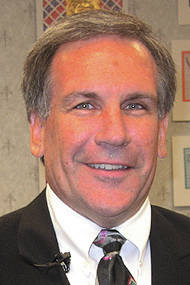
I have often wondered why state and federal politicians establish policies governing education under the pretense that a school is 100 percent responsible for educating us. Why do they ignore what we know to be true about human development when they create, re-create, then re-re-create their stupid laws? Is it because those who insist on writing the rules for education don’t have any particular expertise in that area? While that is certainly true, one would hope that they would exhibit just a modest degree of common sense when crafting their legislation. But, they don’t.
One doesn’t need a degree in education to recognize that factors outside of school have a far greater impact on a child’s success than teachers do. That is certainly not to say that teachers aren’t important. They are, and we can all probably point to one or more who greatly impacted our lives. But, if you can do simple math, the data makes it very clear that continuing to discuss education only in terms of the school we attend is foolhardy.
There are 8760 hours in a year, so if a child begins school the day he/she turns five years old, he/she has been educated in a non-school environment for a total of 43,800 hours. Can anyone possibly disagree with the notion that what happens during these 43,800 hours is integral to that child’s success?
Going further, the average school year is 178 days for seven hours a day, so a child is in school for 1246 hours per year. Simple subtraction tells us, then, that there are 7,514 hours once a child enters school during which he/she is being educated by someone other than a teacher and in a place other than a school. That is approximately a six to one ratio for anyone who cares.
Most children attend school for thirteen years (K-12), so during that time they are in school for 16,198 hours and are somewhere else for 97,682 hours. This equates to 14.2 percent of their school-age life being spent in school, with 85.8% of the time being spent elsewhere. If, just for the fun of it, we would like to include those 43,800 hours a child has been educated before ever setting foot inside a school, the percentage drops to 10.3 percent of his or her time being spent in school. In other words, his or her life is being impacted by someone other than a teacher nearly 90 percent of the time.
You don’t need to be an expert in education to understand these numbers and what they mean, yet every piece of legislation is written as if schools and schools alone are responsible for our success. Well, they aren’t.
So when politicians tell us that the ridiculous school district report card they have created “tells you how your school is performing,” they are lying … or maybe they are just mistaken. But, neither explanation is acceptable.
In most cases, what occurs during those first 43,800 hours of life determines if a child comes to school knowing how to read or is unable to recognize a single letter, color, or number. Is there anyone alive who doesn’t believe this sets the tone for every child’s future? Additionally, what occurs during those 97,682 hours a child is not at school during his/her school-age years is just as significant as the years prior to entering school. Those are indisputable facts that, once again, policy-makers ignore.
These same math problems also explain why there is such a disparity in what is known as “the summer slide,” which is a term researchers use that refers to the amount of knowledge a child loses during the summer months when school is not in session.
It is not unusual for students to regress some academically when they are not in school, however, the “slide” is much more pronounced in students who live in an environment in which education is not valued, which is usually tied to poverty level. Some research even shows that students from wealthier homes actually often gain ground in reading while students who live in poverty fall further behind.
Now, why do you suppose that is? Might one guess that students who gain ground actually practice reading during the summer months, when they are not in school, while those who lose ground do not? Might one also guess that students who come from wealthier homes are, as a rule, afforded more enriching life experiences than students who live in poverty receive? Of course, that’s what that means, and that is why the disparity of time spent in school versus outside of school matters so much.
I suppose I should give the politicians some credit in that, while they do hold schools 100 percent accountable for a child’s success, they do occasionally discuss starting new governmental programs to try to give all children an equal opportunity for success. In other words, they’re willing to throw a few more tax dollars at the problem instead of having meaningful discussions about how to solve it. But, new governmental programs have never solved this problem, and they never will.
What MUST occur if we ever hope to give all children an opportunity to succeed is to engage in honest discussions about what factors most impact a child’s life and what can be done to improve them.
I am still waiting for that discussion to occur in the political world.


